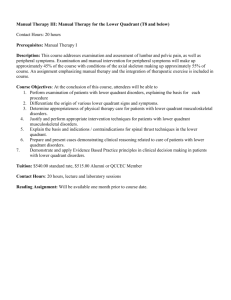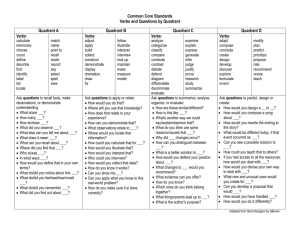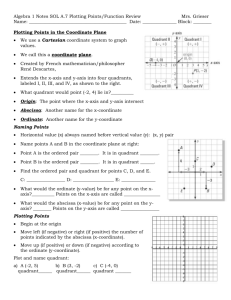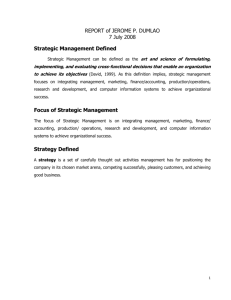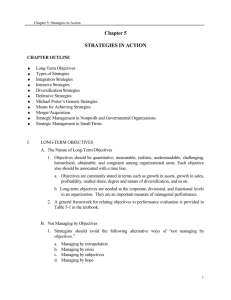conglomerate areas
advertisement
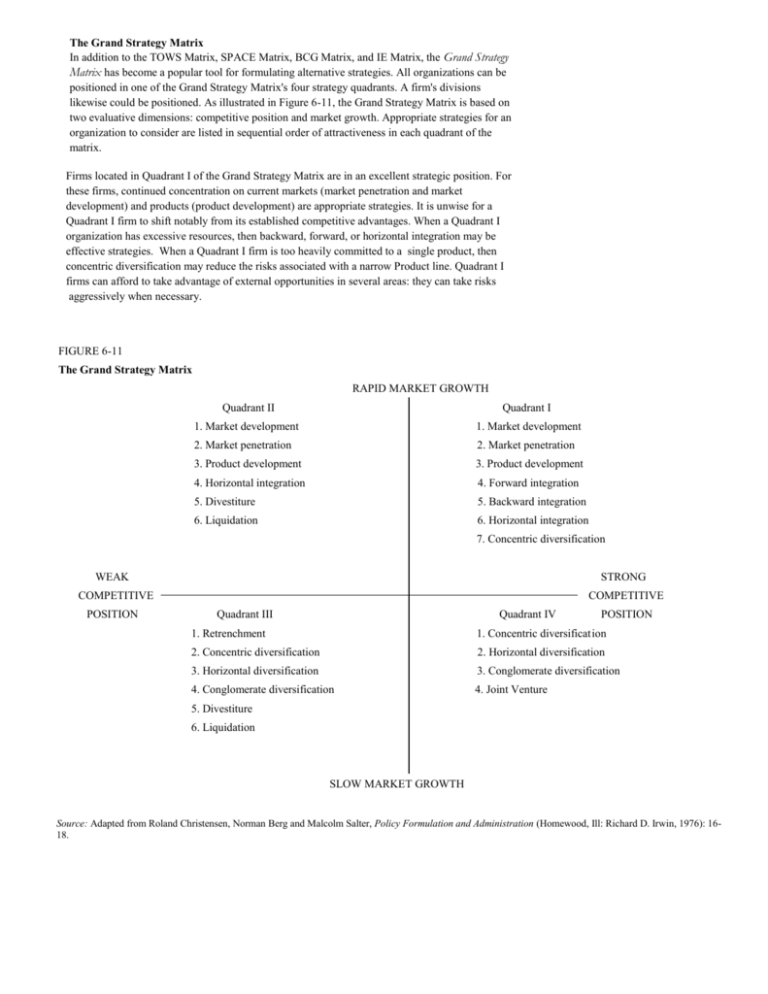
The Grand Strategy Matrix In addition to the TOWS Matrix, SPACE Matrix, BCG Matrix, and IE Matrix, the Grand Strategy Matrix has become a popular tool for formulating alternative strategies. All organizations can be positioned in one of the Grand Strategy Matrix's four strategy quadrants. A firm's divisions likewise could be positioned. As illustrated in Figure 6-11, the Grand Strategy Matrix is based on two evaluative dimensions: competitive position and market growth. Appropriate strategies for an organization to consider are listed in sequential order of attractiveness in each quadrant of the matrix. Firms located in Quadrant I of the Grand Strategy Matrix are in an excellent strategic position. For these firms, continued concentration on current markets (market penetration and market development) and products (product development) are appropriate strategies. It is unwise for a Quadrant I firm to shift notably from its established competitive advantages. When a Quadrant I organization has excessive resources, then backward, forward, or horizontal integration may be effective strategies. When a Quadrant I firm is too heavily committed to a single product, then concentric diversification may reduce the risks associated with a narrow Product line. Quadrant I firms can afford to take advantage of external opportunities in several areas: they can take risks aggressively when necessary. FIGURE 6-11 The Grand Strategy Matrix RAPID MARKET GROWTH Quadrant II Quadrant I 1. Market development 1. Market development 2. Market penetration 2. Market penetration 3. Product development 3. Product development 4. Horizontal integration 4. Forward integration 5. Divestiture 5. Backward integration 6. Liquidation 6. Horizontal integration 7. Concentric diversification WEAK STRONG COMPETITIVE POSITION COMPETITIVE Quadrant III Quadrant IV POSITION 1. Retrenchment 1. Concentric diversificat ion 2. Concentric diversification 2. Horizontal diversification 3. Horizontal diversification 3. Conglomerate diversification 4. Conglomerate diversification 4. Joint Venture 5. Divestiture 6. Liquidation SLOW MARKET GROWTH Source: Adapted from Roland Christensen, Norman Berg and Malcolm Salter, Policy Formulation and Administration (Homewood, Ill: Richard D. Irwin, 1976): 1618. Firms positioned in Quadrant II need to evaluate their present approach to the marketplace seriously. Although their industry is growing, they are unable to compete effectively, and they need to determine why the firm's current approach is ineffectual and how the company can best change to improve its competitiveness. Because Quadrant II firms are in a rapid-market-growth industry, an intensive strategy (as opposed to integrative or diversification) is usually the first option that should be considered. However, if the firm is lacking a distinctive competence or competitive advantage, then horizontal integration is often a desirable alternative. As a last result, divestiture or liquidation should be considered. Divestiture can provide funds needed to acquire other businesses or buy back shares of stock. Quadrant III organizations compete in slow-growth industries and have weak competitive positions. These firms must make some drastic changes quickly to avoid further demise and possible liquidation. Extensive cost and asset reduction (retrenchment) should be pursued first. Art alternative strategy is to shift resources away from the current business into different areas. If all else fails, the final options for Quadrant III businesses are divestiture or liquidation. Finally, Quadrant IV businesses have a strong competitive position but are in a slow growth industry. These firms have the strength to launch diversified programs into more promising growth areas. Quadrant IV firms have characteristically high cash flow levels and limited internal growth needs and often can pursue concentric, horizontal, or conglomerate diversification successfully. Quadrant IV firms also may pursue joint ventures.


